GEOLOGY OF THE MONTE PULLI MINE
Benedetta Pallozzi, Museo Civico “Domenico dal Lago”
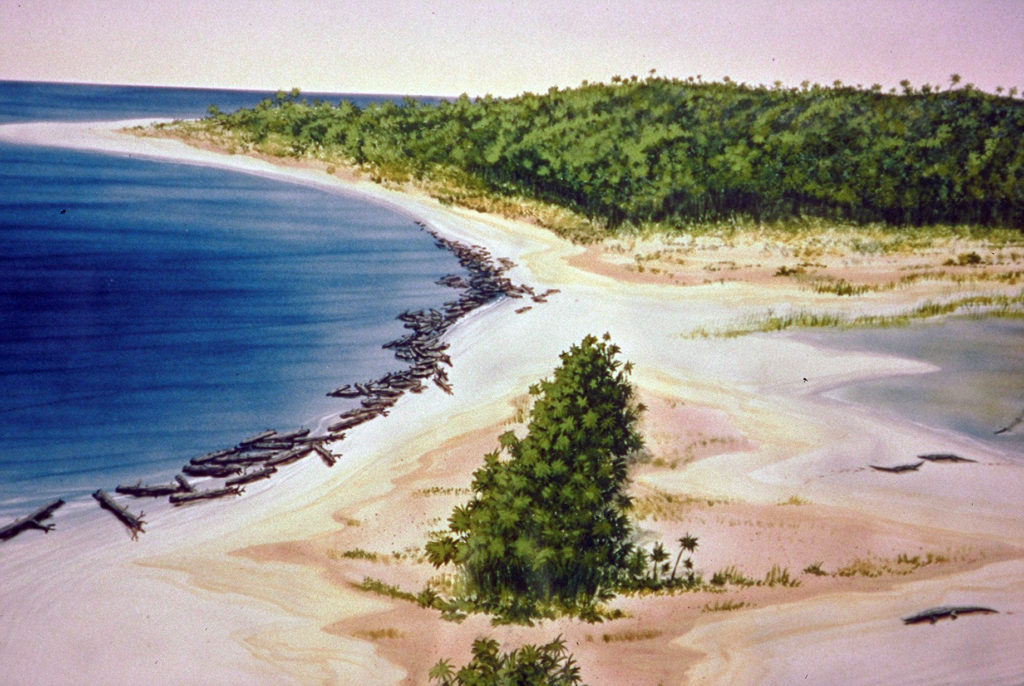
Environmental Reconstruction Area Monte Pulli 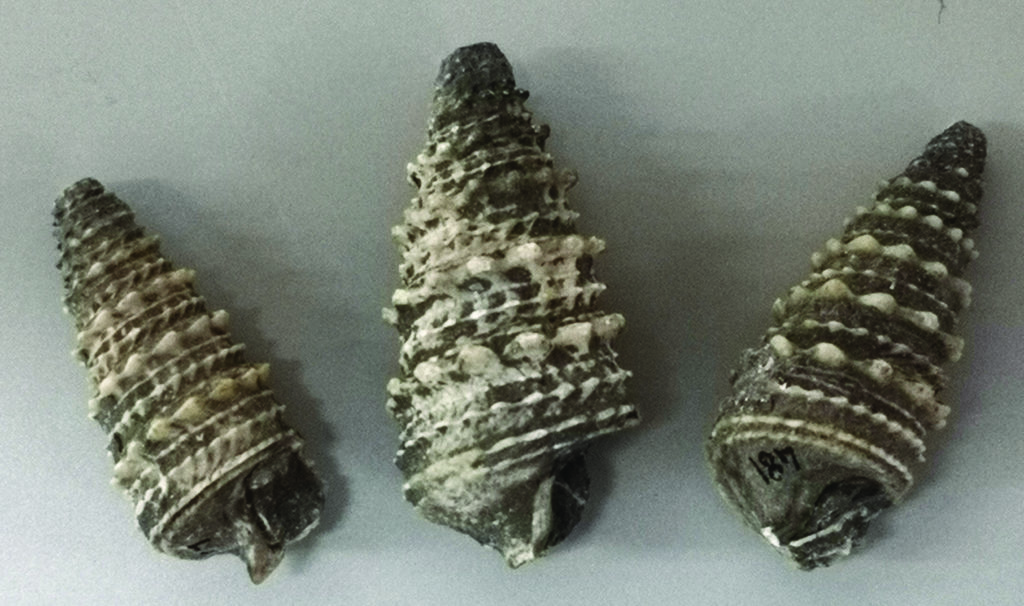
Tympanotonos forojuliensis – mollusco gasteropod
The lignitic deposit of Monte Pulli was formed over calcareous sediments – nummulite limestones – and tuffaceous of the Middle Eocene (50 million years ago) and originated by the accumulation of vegetation within a basin/mound in contact with the sea.
Thanks to this connection there was the formation of a series of eight layers of lignite, some of very good quality, and of six layers of bituminous shale interspersed with lithic materials such as limestone, sandstone and tuff for a total thickness of almost eighty meters.
The tectonic phases, subsequent to the formation of the deposit, accentuated the original basin’s hollow disposition that consequently also suffered fractures with horizontal and vertical displacements. The external observation of the lignite formation and the exploitation works have highlighted how the lignitiferous horizon is cut to the west by a vertical fault oriented towards the south; to the east, instead, the basin was interrupted by a large explosive apparatus (neck) that removed part of the lignitic formation depositing within the conduit tuffs and basaltic breccias, strips of basaltic lava and fragments of calcareous rocks
The carbonate levels derive from the slow transformation of large accumulations of continental type vegetable substance.
The presence of marine fossils in the tufa interspersed with the lignite levels – fossils which have been the object of important studies by Dr. Domenico Dal Lago but also by foreign scholars such as Paul Oppenheim – allows us to understand that the vegetable debris must have accumulated at the margins of a bay lapped by the sea which periodically submerged it.
In the tufa levels numerous molluscs have been found, especially gastropods, and fossil excrement (coprolites) attributed to crocodiles.
The Lignite of Monte Pulli
It was Girolamo Festari who discovered, around the middle of the eighteenth century, some lignite (a fossil coal) near the district of Campotamaso. Initially exploited freely and without any kind of constraint, it was only around 1840 that the Austrian Empire decided to fully exploit its potentialities, assigning the concession to the Società Veneta Montanistica.
Under the guidance of engineers mostly of German origin or provenance, the operations proceeded with good luck in the following years. However, there were many accidents – even serious ones – occurred to the miners who worked in the mine in precarious safety conditions, as well as some episodes of “industrial pollution” of the water related to the washing of the coal.
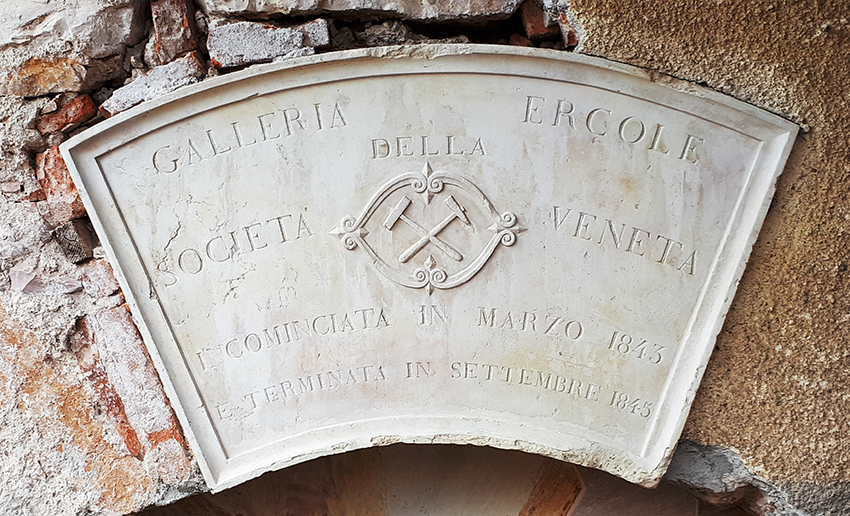
Gallery start 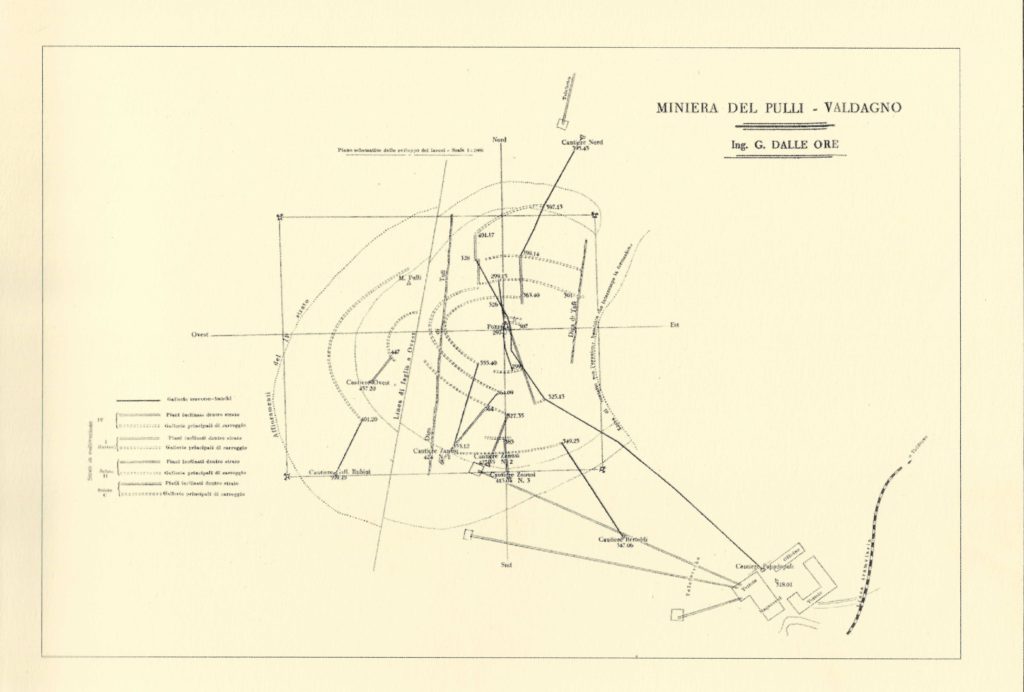
SCHEME OF THE SYSTEM OF TUNNELS AND CABLEWAYS BETWEEN THE MOUNTAIN AND THE PAPADOPOLIS MINE (ENG. G. DALLE ORE) 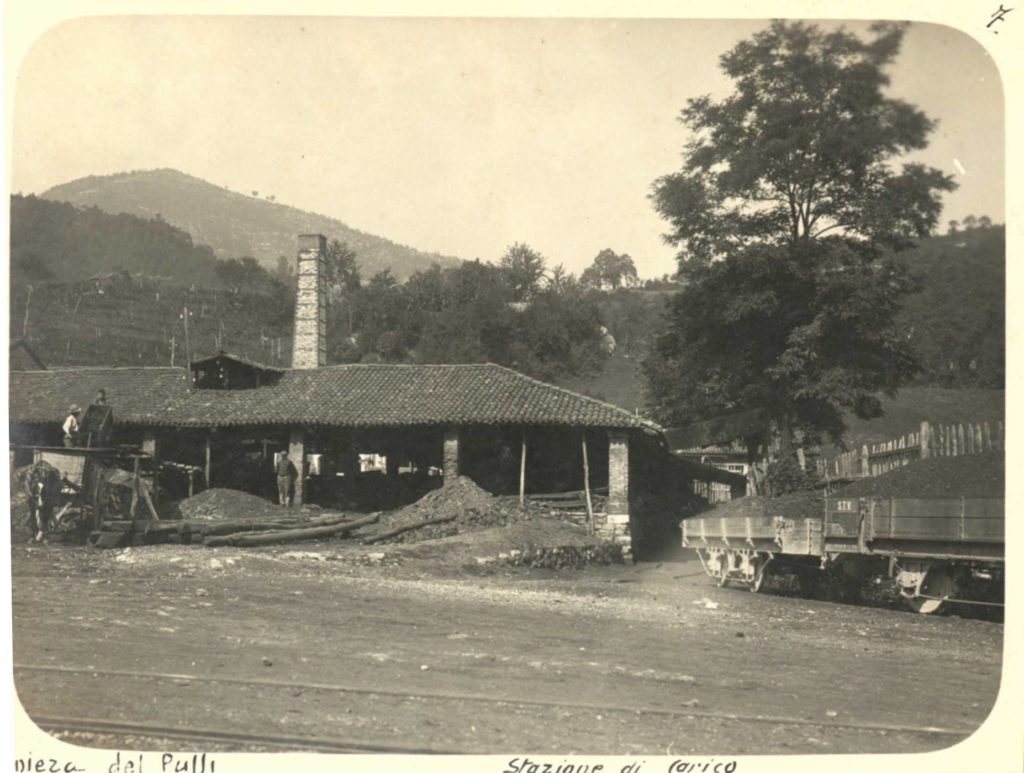
Loading station 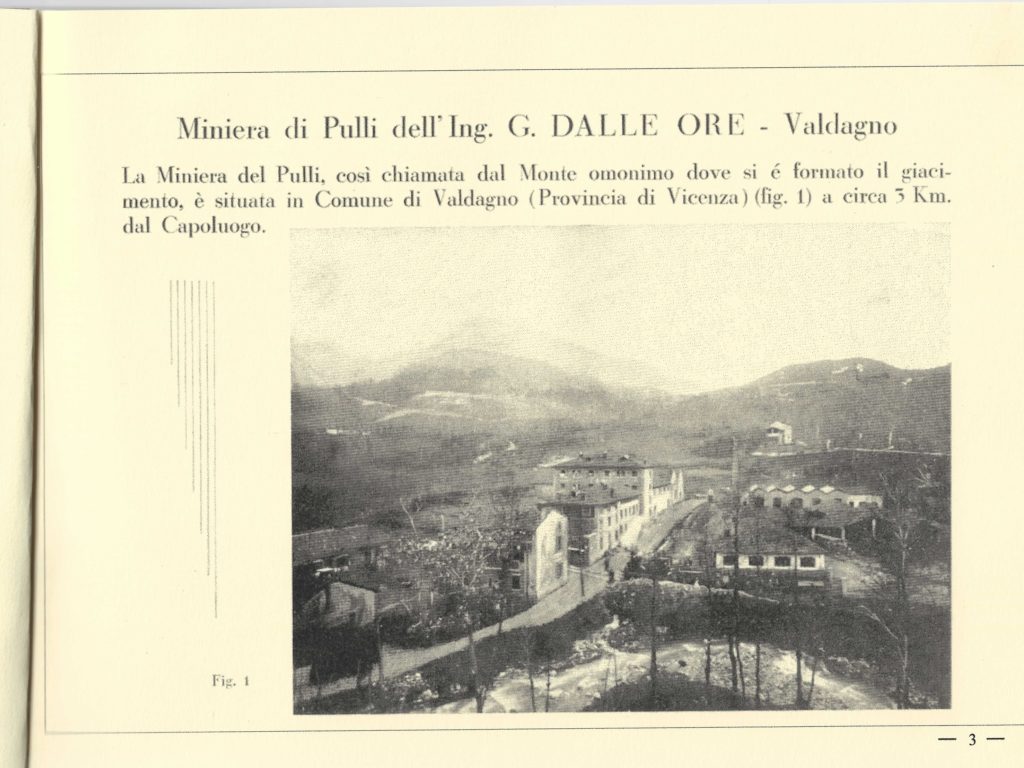
Initially destined only for extraction, from 1863 the Pulli lignite was also processed on site with the construction of an important plant adjacent to the mine.
Between various events and after several changes of ownership – including to Alessandro Rossi who used the lignite as fuel for his factory in Schio – the mine passed under the control of Girolamo Dalle Ore at the end of the nineteenth century. The latter inherited a fairly flourishing situation, destined to reach its peak during the Great War – when the mine was declared an auxiliary plant and several soldiers exempt from the front were employed there – and above all in the following two decades.
The high quantity of energy destined to the functioning of the mine’s energivorous mechanisms (above all pumps and lifting organs) linked the history of the mine to hydroelectricity. Dalle Ore – as had been done by the Marzottos, her relatives – thought about using the waters of the upper Agno Valley. More specifically, it was the water of the Torrazzo and of the Montagna Spaccata that supplied the energy necessary for the mine.
Lignite production began its decline from the 1940s, with the placement of the mineral becoming increasingly difficult on the market and the progressive reduction of reserves. A difficult situation that culminated in the closure of the Pulli mine in 1958.
